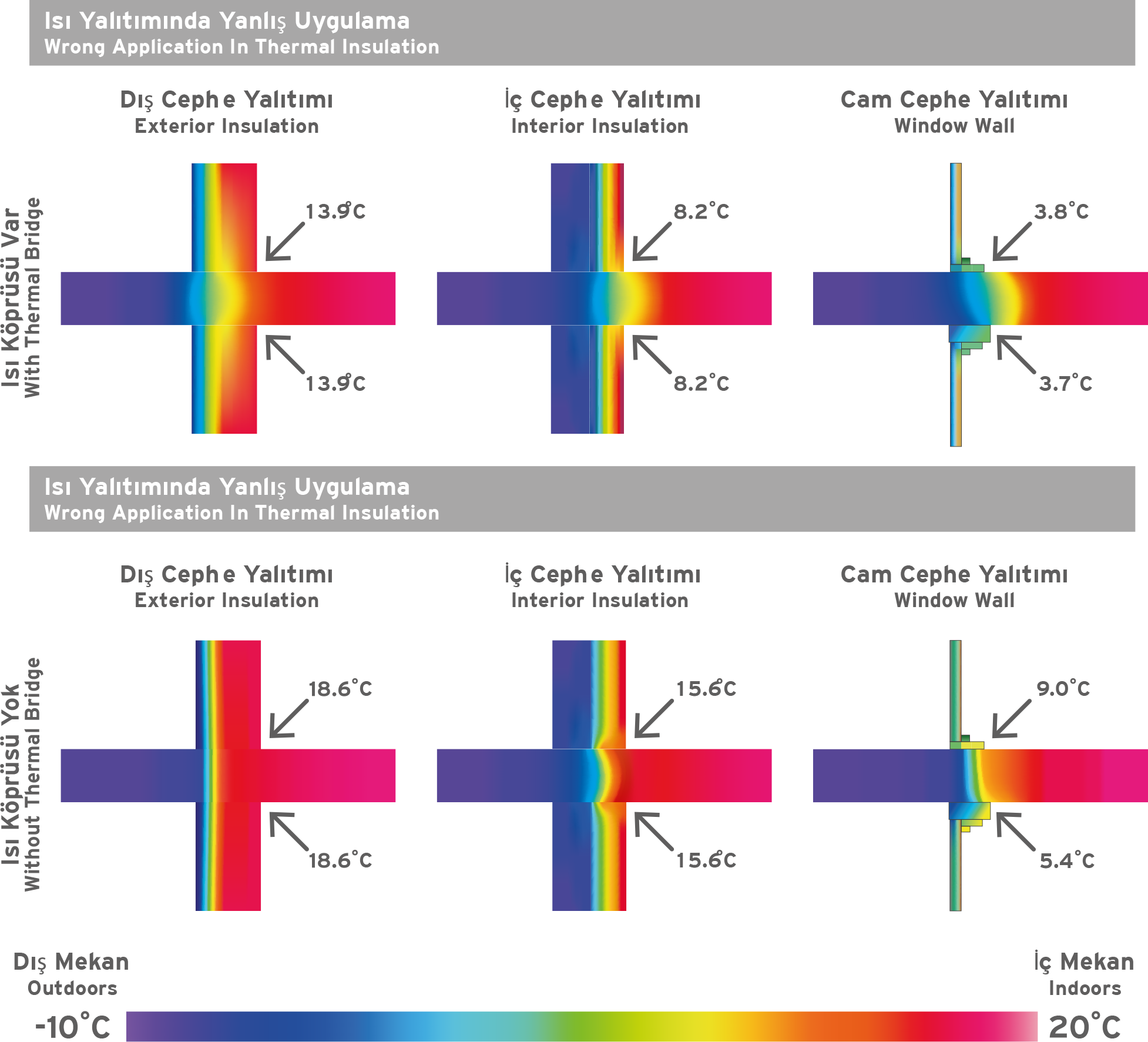Тепловой Мост
Thermal bridges are zones where heat transmission is more intense than other parts of the building due to materials or construction.
These zones are weak points in terms of thermal insulation. Therefore, surface temperatures are lower in interior surfaces of parts with thermal bridges. Remarkable heat loss occurs here compared to adjoining parts. The occurrence of thermal bridges causes increasing energy costs, risk of mold due to vapor condensation, cracks in the building, and accumulation of dust and dirt.
Thermal bridges are zones located in exterior walls, floors and ceilings of buildings, where the heat can penetrate inwards easier than neighboring zones. The less thermal bridges a building has, the higher energy efficiency is ensured. These thermal bridges can be prevented with a good planning, correct application and the use of correct materials.

Thermal Bridge Based On Geometry
Thermal bridge based on geometry occur in exterior corners of buildings, exterior walls and roof slabs. In these areas, exothermic exterior surface is larger than endothermic interior surface. Heat flow spreading to a larger area leads to cooling of interior surfaces. Surface temperature in interior corner is lower than plain wall and flooring surfaces.
Thermal Bridge Based On Material
Thermal bridges occur if materials with different insulation features, the heat conductivity coefficients of which are not close, are applied side by side or on top of each other. In this case, a higher heat flow occurs locally in the area where the material with the higher heat conductivity is placed.
For example, thermal bridges based on material can be observed in shutter frame on windows on an insulated exterior wall, or in wooden beams of an insulated roof.
Convective Thermal Bridge
It occurs when thermal energy is carried through a building’s exterior walls that transmit a flowing substance (air). It is defined as the lack of air tightness in the components of various building materials that separate the exterior environment from interior environment. Leakages at air tightness level in the exterior wall cause thermal bridges.
Gaps in insulation joints in the roof area or damaged and incomplete insulation joints in windows are also examples of these leakages.